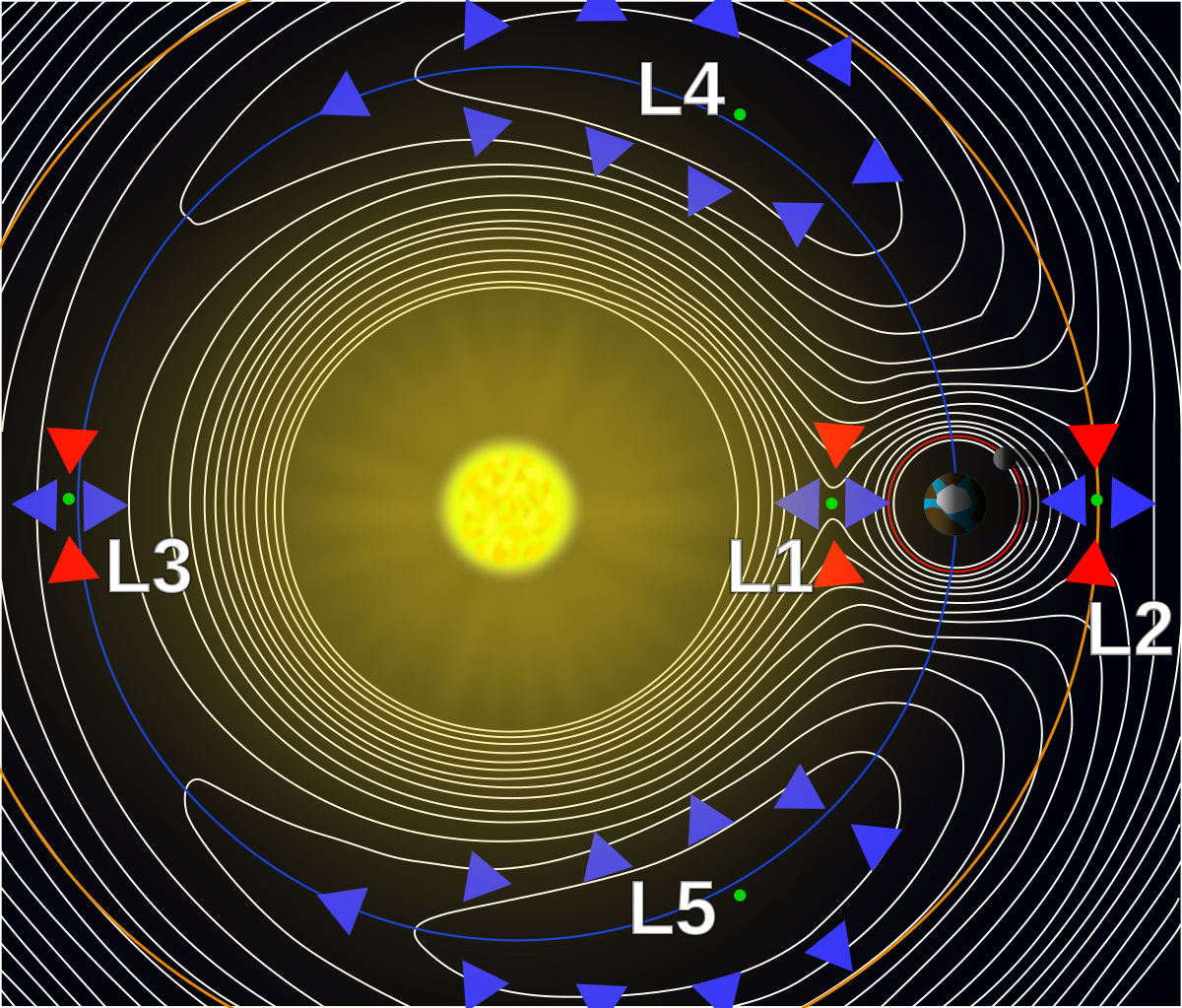Sun–Earth L2 is a good spot for space-based observatories. Because an object around L2 will maintain the same relative position with respect to the Sun and Earth, shielding and calibration are much simpler. It is, however, slightly beyond the reach of Earth's
umbra,
[24] so solar radiation is not completely blocked at L2. Spacecraft generally orbit around L2, avoiding partial eclipses of the Sun to maintain a constant temperature. From locations near L2, the Sun, Earth and Moon are relatively close together in the sky; this means that a large sunshade with the telescope on the dark-side can allow the telescope to cool passively to around 50 K – this is especially helpful for
infrared astronomy and observations of the
cosmic microwave background. The
James Webb Space Telescope was positioned in a halo orbit about L2 on January 24, 2022.









